Reflections from our symposium Sustainable Research : Fit for the Future
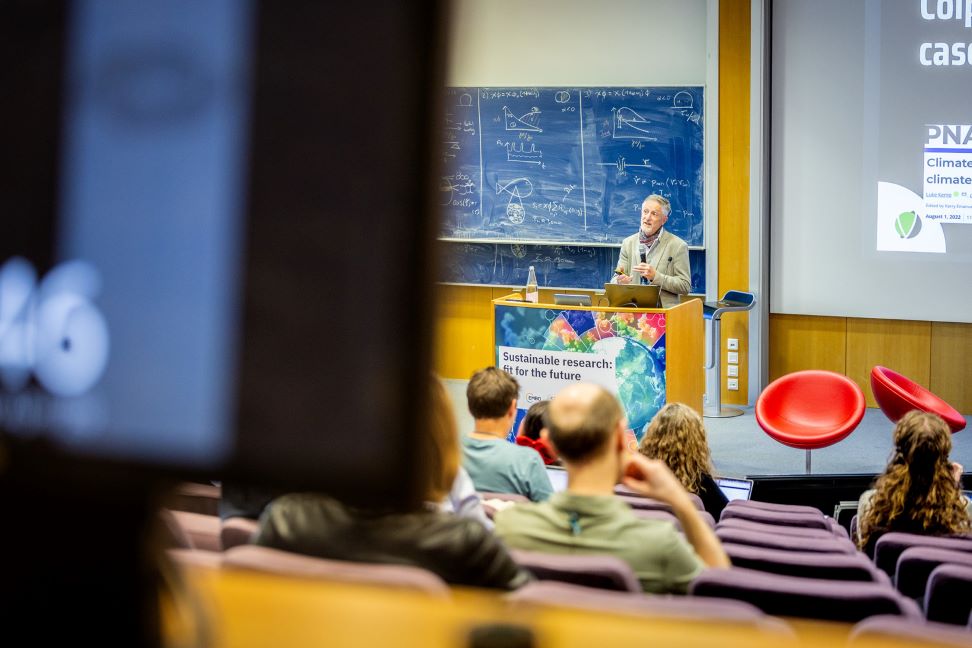
On April 29, over 300 people gathered for the Sustainable Research —Fit for the Future symposium.
As part of the SuReSymp symposia series, this year’s event explored how the scientific community can play a bigger role in addressing global challenges by rethinking and transforming the current research model. The event was designed to take attendees on a journey from individual action to larger systemic change, with input from researchers, institutional leaders, funders, other stakeholders and even artists. The aim? To share knowledge and spark collective action that would shape the future of sustainable science.
Symposium recording
Available here
Inspiring talks to inspire action
The day kicked off with a powerful keynote by Fernando Valladares, an ecologist and science communicator, who reminded everyone about the pressing environmental crises we face. Valladares emphasised the importance in science of leading by example—not just in reducing environmental footprint, but also in championing sustainability through data, conversations, and innovation.
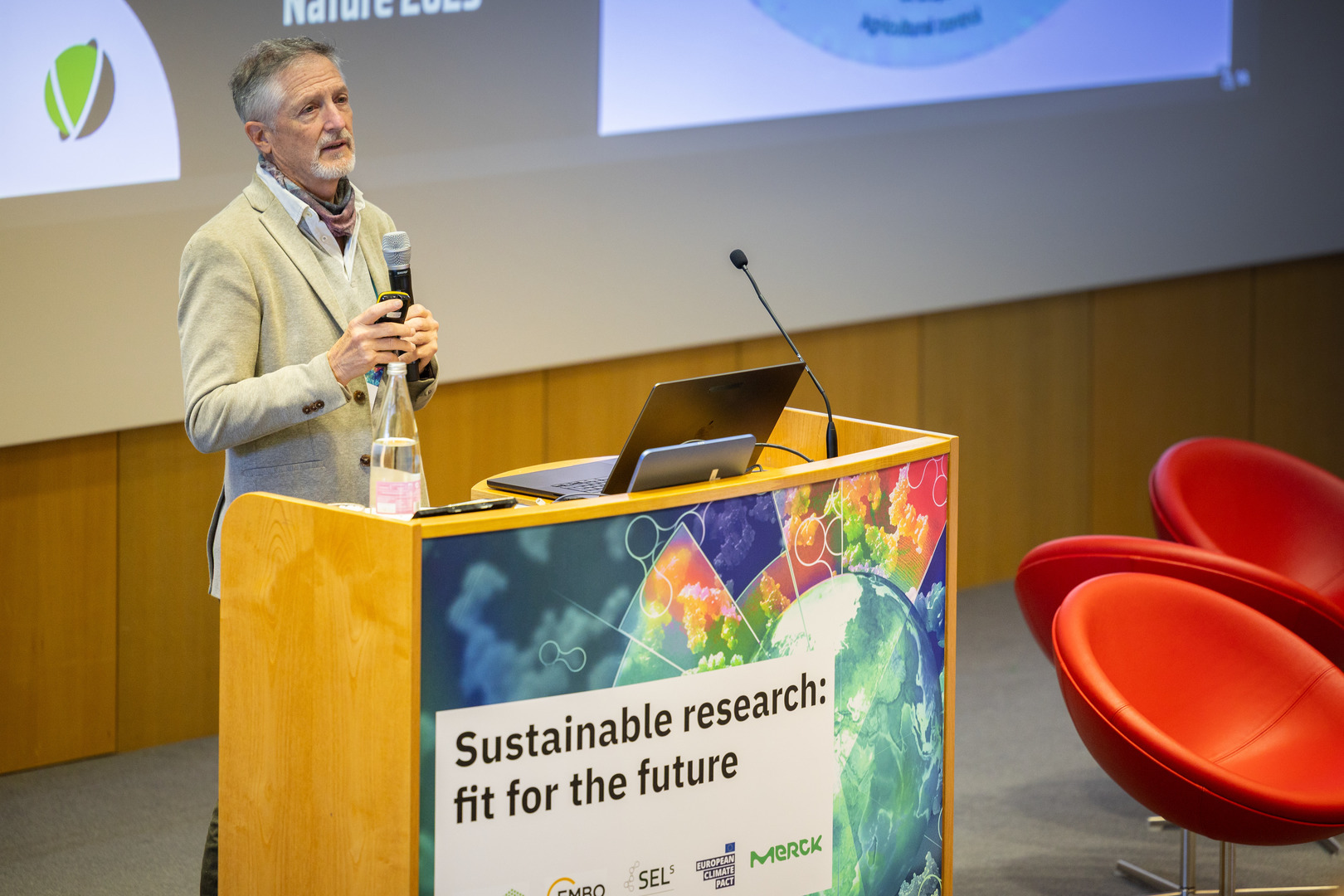
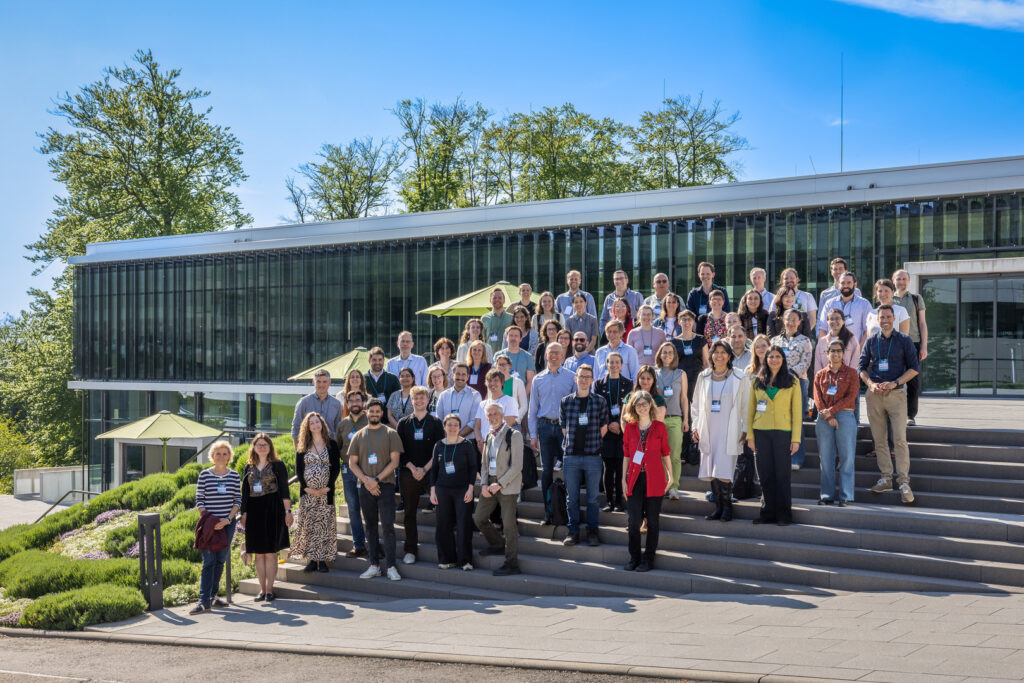
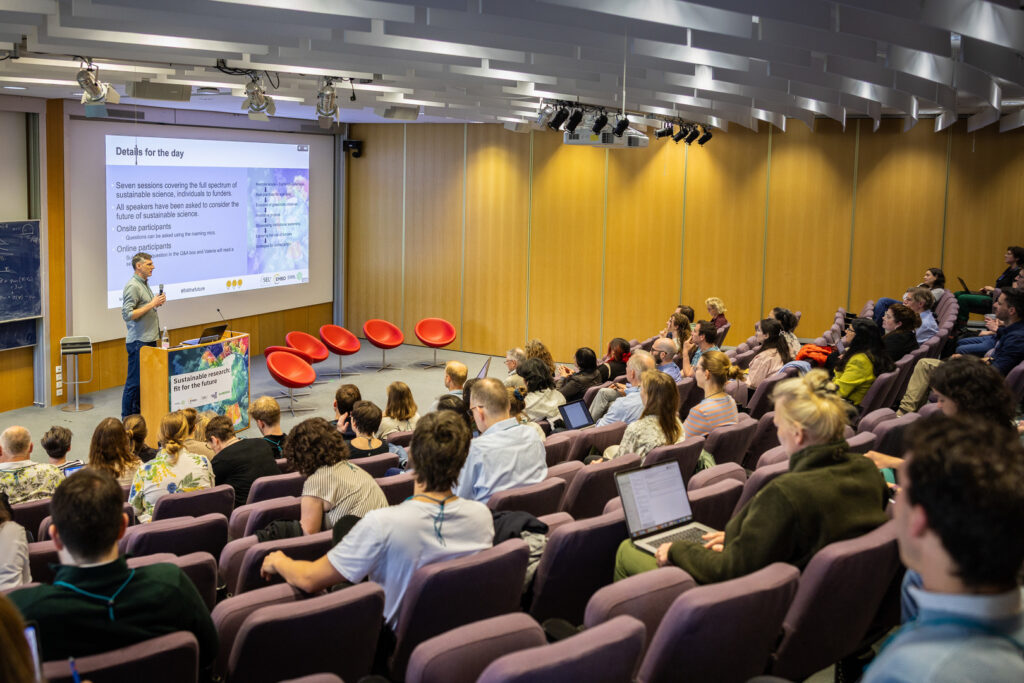
A central theme that emerged was the importance of grassroots initiatives. Researchers and sustainability professionals shared stories of informal networks and community-driven projects – carbon calculators, lab sustainability guidelines, and peer-to-peer knowledge-sharing platforms – that transform how we approach sustainability in science.
The day also showcased some amazing innovation. Finalists for the EMBO Sustainability Award 2024 gave short presentations on cutting-edge projects – from new ways to rethink procurement systems to plastic-free protocols and reusing materials in scientific experiments. These talks helped remind participants of the creativity and dedication driving the next wave of sustainable science.
 From saving energy and reducing waste in labs (both wet and computational) to incorporating sustainability into research culture, the discussions highlighted how small individual actions can lead to significant institutional change.
From saving energy and reducing waste in labs (both wet and computational) to incorporating sustainability into research culture, the discussions highlighted how small individual actions can lead to significant institutional change.
Institutional leaders and funders joined the conversation by discussing the new policies, funding structures, and partnerships that are evolving to push sustainability in research. They discussed topics like the Heidelberg Agreement and the UK Concordat, with a focus on how to make environmental responsibility a central part of the research ecosystem. The takeaway? Funders need to match big ambitions and long-term strategies with practical steps, setting clear metrics and having transparent reporting.
The symposium wrapped up with a panel that explored how to bring about systemic change in the research world. The panel was a chance to reflect on what tools, partnerships, and mindsets are needed to embed sustainability across the entire research landscape. The overarching message? Sustainable science isn’t just an add-on to existing practices – it’s a way to rethink how we define excellence and impact.
Art and science
A symposium art exhibition featured dresses made from used nitrile gloves and plastic pipettes that encouraged reflection on sustainability from a cultural and emotional standpoint. The exhibition was created by Saki the Artist who also created a sculpture from typical laboratory plastic during the day and engaged with participants on the problem of laboratory waste. A lively community celebration with pizza, drinks, and music concluded the symposium, reminding participants that sustainability is as much about human connection as it is about technical solutions.
In the face of growing environmental challenges, the 2025 Sustainable Research symposium offered a hopeful vision for the future of science, one that is collaborative, conscious, and deeply committed to the health of our planet.
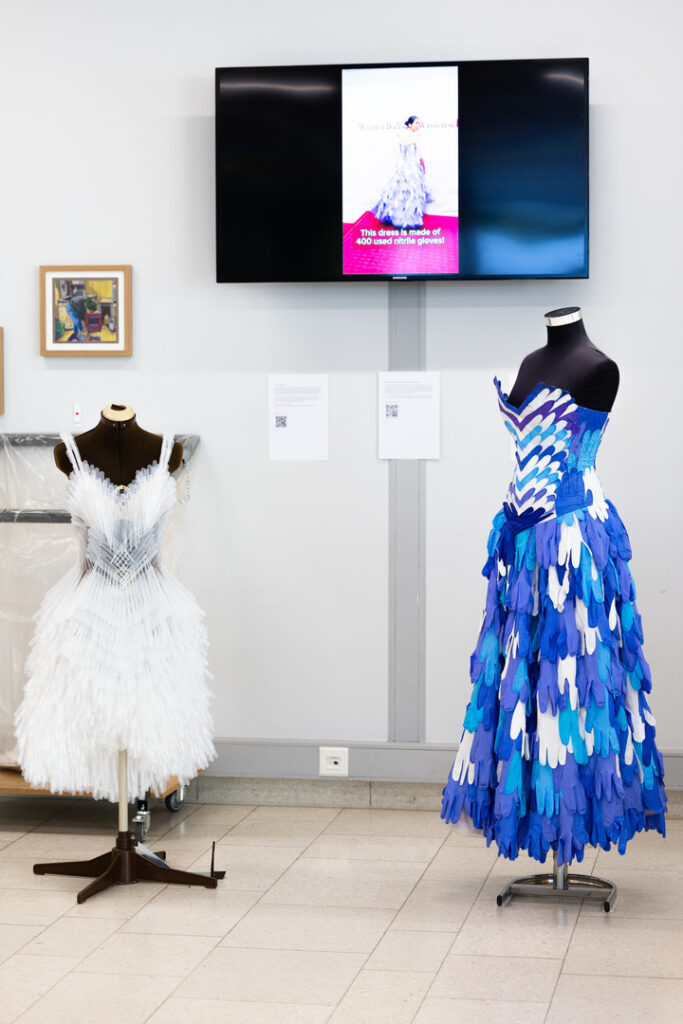
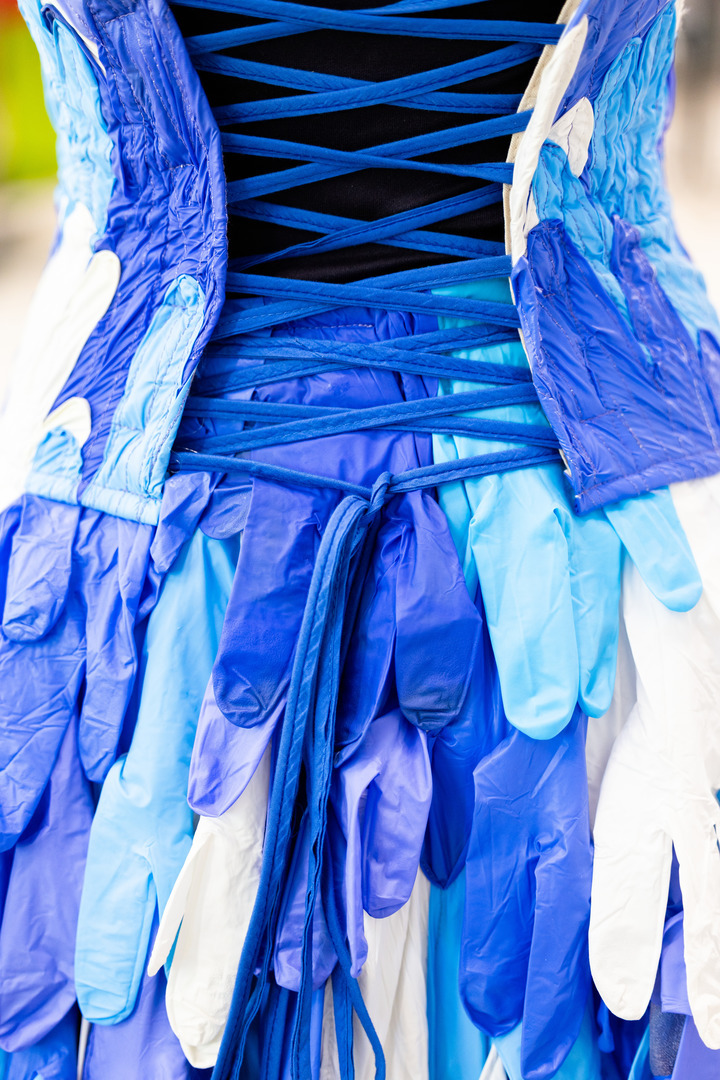
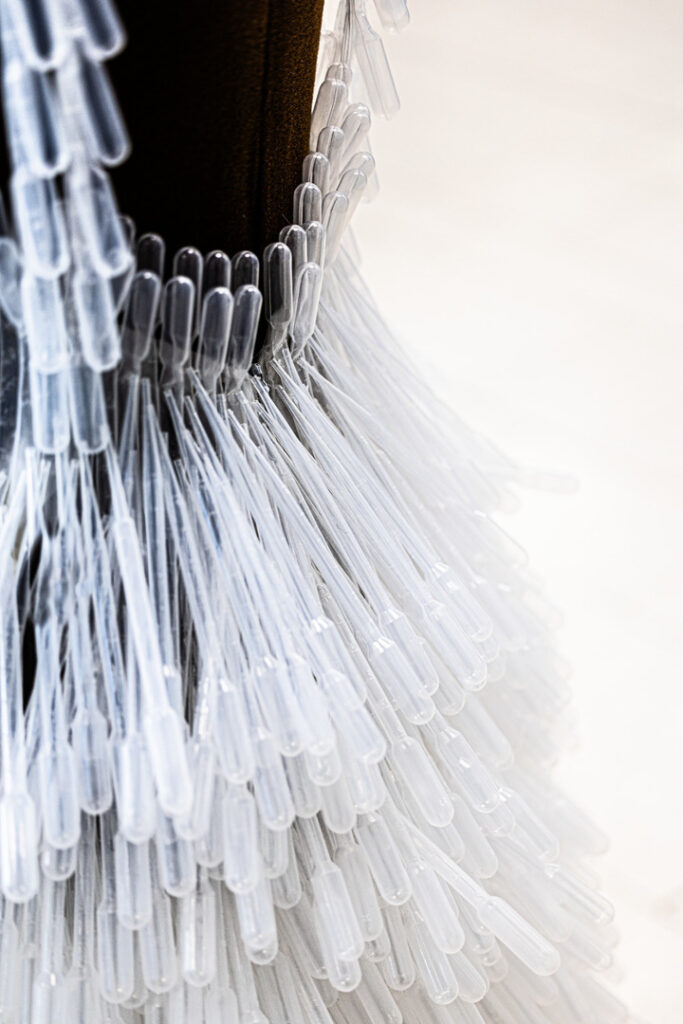
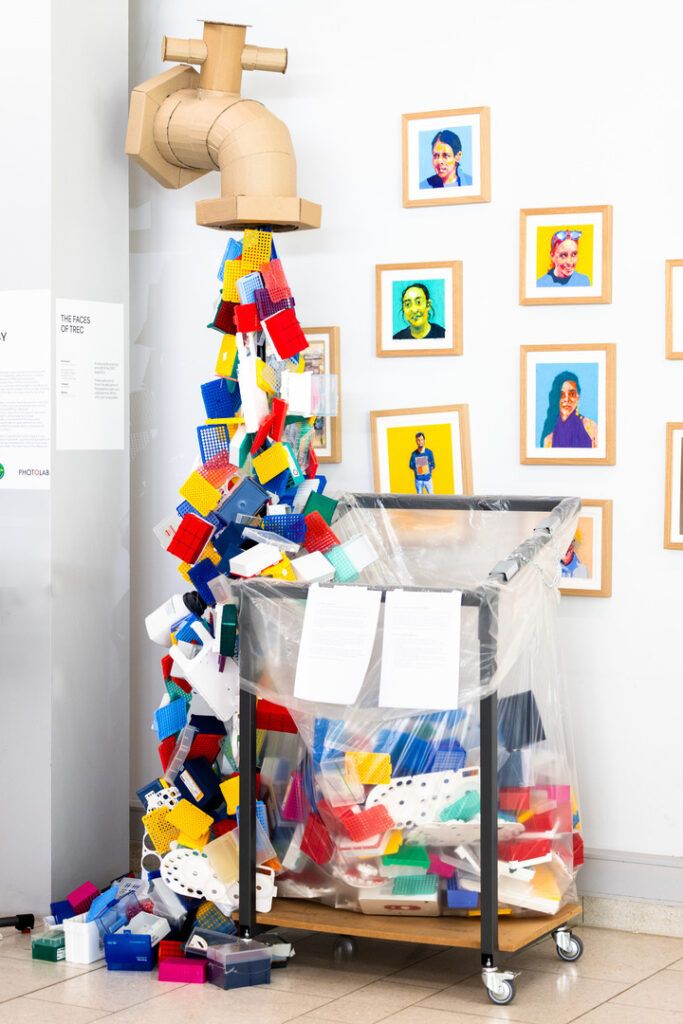
The event, a collaboration between EMBL, EMBO, and the Sustainable European Laboratories Network, was supported by the European Union’s Climate Pact and Merck. It achieved the highest EMBO sustainability event rating, marked by three leaves – an impressive feat!
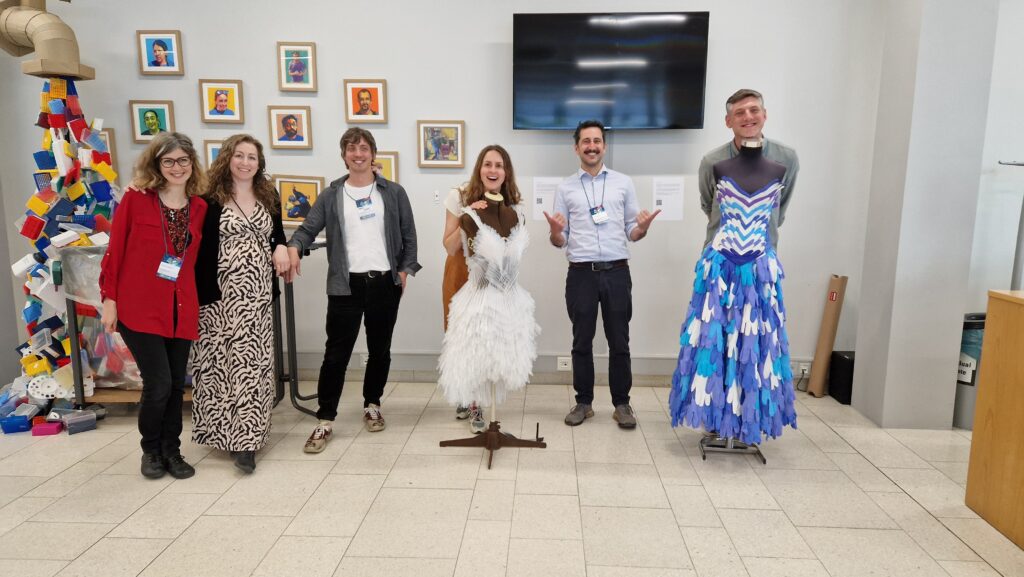
Images cc Kinga Siring/EMBL